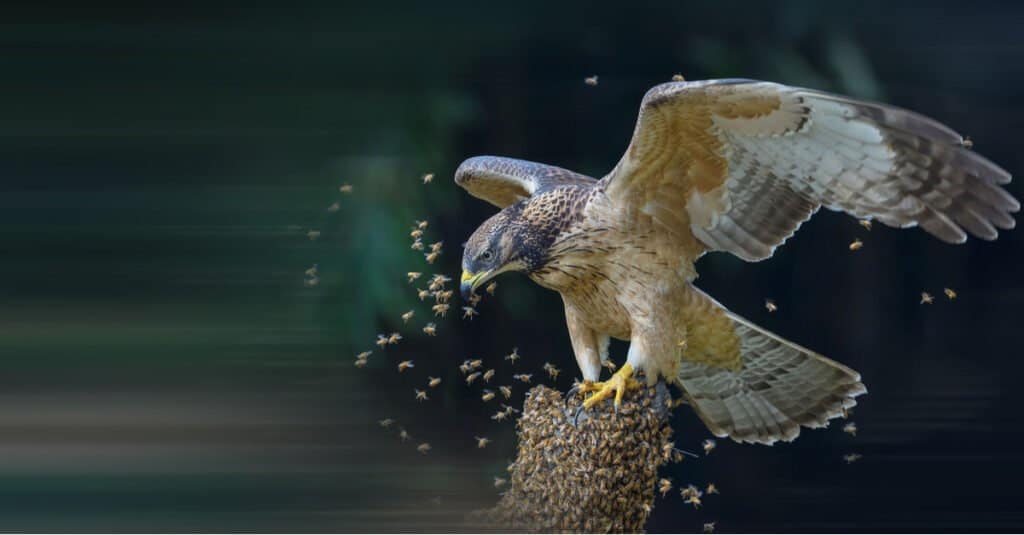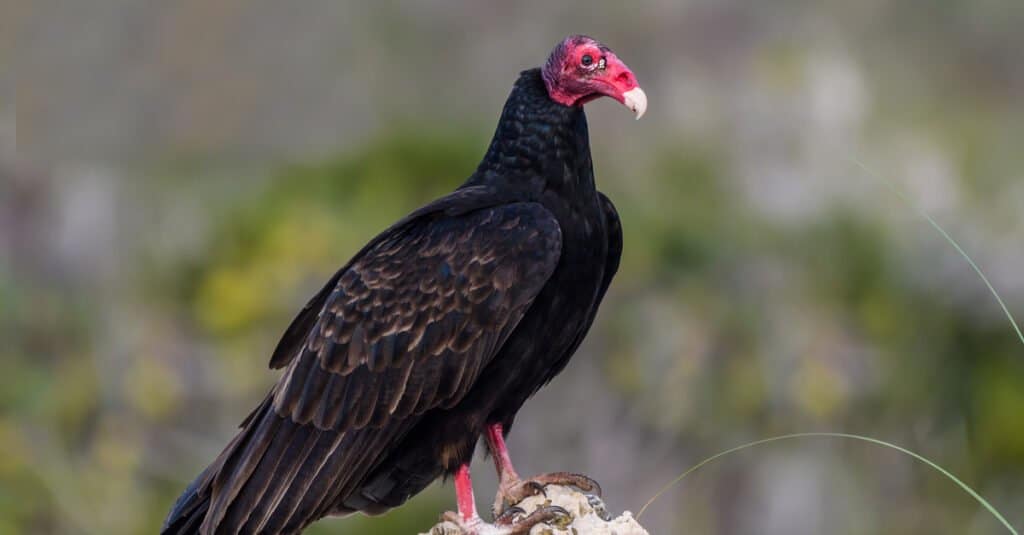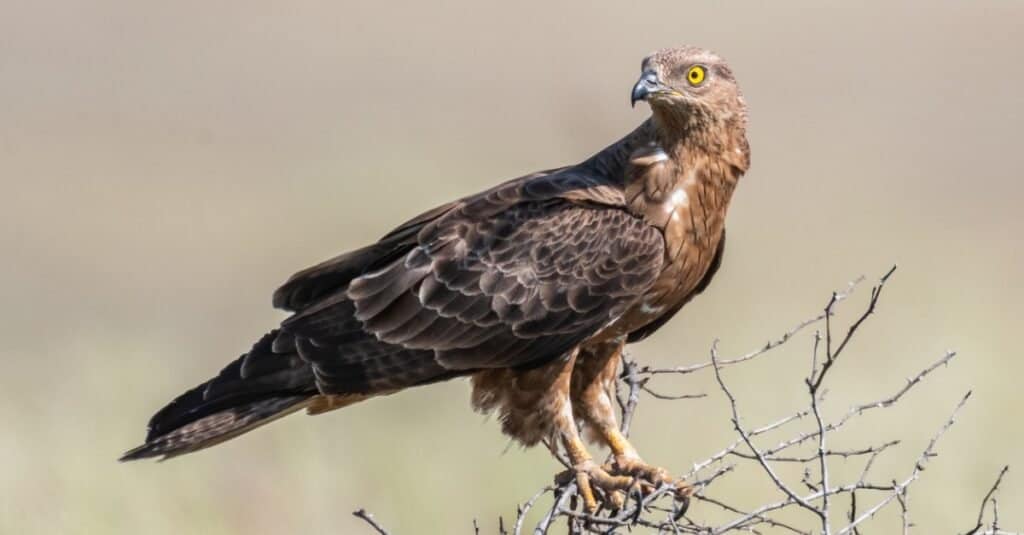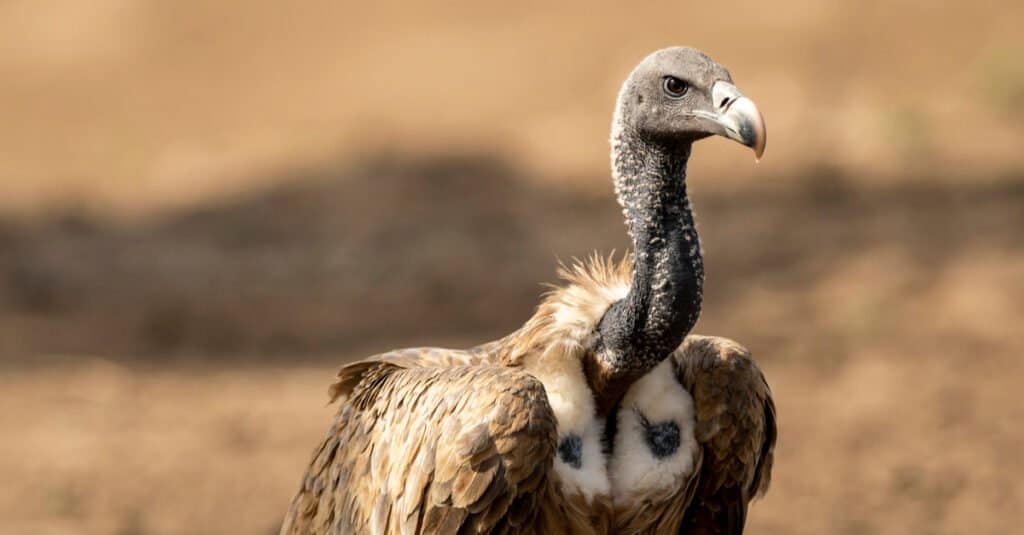Did you know that there is a difference between a vulture vs buzzard? While these names are often used interchangeably to describe the same bird, vultures and buzzards are actually different from one another. But how do they differ, and how can you learn to tell them apart no matter where you are in the world?
In this article, we will address the various differences between vultures and buzzards, including their physical appearances so that you can learn how to tell them apart. Let’s get started and talk about these majestic birds of prey now.
Comparing Vulture vs Buzzard

| Vulture | Buzzard | |
|---|---|---|
| Classification | Cathartidae or Accipitridae | Buteos |
| Diet | Dead animals and carrion | Small rodents and sometimes carrion |
| Habitat | Avoids cold habitats | Thrives just about anywhere |
| Appearance | No feathers on their heads, small feet, eyebrows; usually larger than buzzard varieties | Broad wings, rounded tails, feathers everywhere, taloned feet; usually smaller than vultures |
| Common Names | Vulture, buzzard, turkey vulture | Hawk |
Key Differences Between Vulture vs Buzzard

There are nearly 40 different species of vultures around the world, while there are only 20 or 25 species of buzzards.
©Ishor gurung/Shutterstock.com
There are many key differences between vultures vs buzzards, though it depends on where you live. In the United States, the population refers to vultures and buzzards indistinguishably, even though these birds are different species. Regardless of their regional name differences, these birds have different diets and physical traits. Let’s take a look at some of these in more detail now.
Vulture vs Buzzard: Species Classification

Vultures are known for eating carrion, or dead animals, while buzzards prefer to consume live animals.
©Wang LiQiang/Shutterstock.com
A key difference between vulture vs buzzard lies in their species classification. This is because vultures and buzzards are interchangeable names in a lot of locations, but they are actually different animals. Let’s talk more about their classification and name differences now.
There are nearly 40 different species of vultures around the world, while there are only 20 or 25 species of buzzards. This is because vultures are numbers of two different families, based on Old World and New World species classification. Buzzards belong to the buteos family and have a completely separate classification from vultures.
While this distinction will not help you identify them in the wild, it is important to note that they are indeed different birds. Their differences become more clear once you understand their appearances, diets, as well as their preferred habitats.
Vulture vs Buzzard: Diet

While vultures are capable of sniffing out dead prey from miles away, buzzards use their keen eyesight in order to find their meals.
©FotoRequest/Shutterstock.com
Another key difference between vultures and buzzards is their diet preferences. Vultures are known for eating carrion, or dead animals, while buzzards prefer to consume live animals. However, even buzzards will consume dead animals or carrion when there are no other options, but they do prefer to eat live rodents such as rabbits or rats.
Vultures have a notorious reputation for eating dead animals as they circle overhead in the sky. While vultures are capable of sniffing out dead prey from miles away, buzzards use their keen eyesight in order to find their meals. This is not only a key difference in their dietary preferences, but also their physical capabilities.
Vulture vs Buzzard: Appearance

Buzzards look more like a traditional bird of prey compared to vultures, covered in feathers and complete with powerful talents and keen eyes.
©iStock.com/MriyaWildlife
Vultures vs buzzards look different in their overall physical appearance. This is very obvious when you put these two birds side by side, as vultures are notorious for having bald heads, free of feathers. Buzzards look more like a traditional bird of prey, covered in feathers and complete with powerful talents and keen eyes.
Depending on the species, the majority of vultures are larger than buzzards. Their wingspan is impressive, and they have a different flight pattern when compared to buzzards. On the other hand, buzzards have wide and capable wings, and their feet in particular are very different from vulture feet. This is because buzzards use their talons and claws to pick up prey and carry it off, while vultures do not need to do this for their dietary preferences.
The necks of vultures are also much longer than the necks of buzzards. Their bodies are large and slow in comparison to buzzards as well, given that buzzards need a bit more mobility in order to hunt and fly.
Vulture vs Buzzard: Habitat Preferences

The necks of vultures are much longer than the necks of buzzards.
©Sourabh Bharti/Shutterstock.com
A final difference between a vulture vs buzzard lies in their preferred habitat. Vultures prefer to avoid cold climates, while buzzards are found all over the world in a wide variety of habitats. But why might this be? Let’s go over some of these reasons in more detail now.
Buzzards enjoy many different climates and biomes, including open meadows and plains where they can easily hunt for their prey. Vultures tend to stick to locations with a wide variety of animals so that they can feast on dead or sick animals. These key dietary preferences are some of the reasons that vultures and buzzards choose their home locations. However, there are other reasons as well.
Given the bald headedness of vultures, they are incapable of regulating their temperatures in cold climates. Vultures thrive in warm areas with reasonable winters, while buzzards remain largely unaffected by cold climates. Buzzards are found throughout the world, and studies have shown that at least one buzzard species exists everywhere except Antarctica. Just like vultures, even buzzards can’t handle cold weather like that!
What is the Largest Vulture in the World?
The Andean condor holds the title as the largest among vulture species, boasting an impressive wingspan spanning nearly 11.4 feet! These birds can weigh up to 33 pounds, relying on air currents and thermal updrafts, adapting to their location, to sustain flight despite their substantial weight.
Further, griffon vultures are big African birds, standing 33 to 38 inches tall, with an 8-foot wingspan. They live in the Sahel region of Africa, from Senegal, Gambia, and Mali in the west to Sudan, South Sudan, and Ethiopia in the east.
The photo featured at the top of this post is © Aitor Lamadrid Lopez/Shutterstock.com
Thank you for reading! Have some feedback for us? Contact the AZ Animals editorial team.






